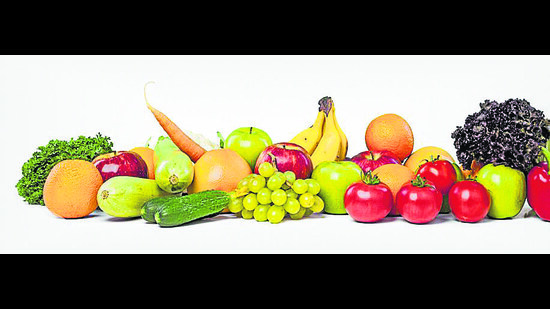Slicing up the rainbow: Swetha Sivakumar on food colouring
Price, sheen, response to heat – there’s a lot to consider when it comes to choosing natural or synthetic dyes. Plus, how do we see colour really? Find out.
Colour is a vital data set, when it comes to food. Much of the time, we are responding to it by instinct, using information don’t even know that we know.

We think of a redder apple as juicy and desirable, for instance, because that’s exactly what it is. Fruits become more intensely coloured as they ripen. The riper they are when we eat them the better, because they are highest in energy at their peak. Conversely, a mouldy green, blue or black discolouration tells us that a food is now past its prime.

Eat the rainbow, nutritionists say, indicating how foods rich in different vitamins and nutrients are also grouped by colour.
Candy manufacturers, recognising the allure of a range of bright colours, make sure each gummy handful contains a mix of shades. Those hues, of course, are often food colouring. But before we get to how those work, a quick recap on how we see colour. (Honestly, as often as we revisit the explanation, it can still feel like an enigma, can’t it? Let’s try to change that this time.)
When thinking about how hues work, it helps to remember that colour cannot be perceived in the absence of light.
Now, regular light (whether from an electrical source or the sun) enters a space carrying the full spectrum of colour that it contains. That full spectrum, represented by the acronym vibgyor, is what we see in the average rainbow.
Water is colourless, so when light strikes it directly, all its colours are reflected back, causing the rainbow. Say the same light strikes an object that is blue. Which rays of the spectrum are absorbed and which are reflected is a factor of chemistry. Objects that are blue — whether a berry or a dyed cotton T-shirt — contain chemical that are less likely to absorb blue wavelengths. Those wavelengths that aren’t absorbed bounce off, or are reflected. And this is why we see blue when we look at the object.
With more complex colours — think of mauve — the base colours are the ones being reflected, in a certain proportion. With mauve, those would be red, green and blue.
In the same way that a printing machine can arrive at any shade with a base of just RGB (red, blue, green) or CMYK (cyan, magenta, yellow and black), the base colours of the spectrum mix and mingle to create the range of shades we see in the world.
Incidentally, light is also a form of energy. It weakens chemicals and brings molecules to an excited state, as they absorb this energy. This can cause photodegradation, whether in the form of a fading T-shirt or the dulling of turmeric in a clear bottle.
Natural pigments, such as carotenoids and flavonols, are much more susceptible to photodegradation than synthetic colouring. The natural molecules are large and bulky, with a tendency to react and weaken when exposed to light energy.
Synthetic colouring is made in a lab, from substances extracted from petroleum and crude oil. Their chemical structure is designed to be much more durable. Synthetic colours are also less likely to be degraded by microbes. Since they do not naturally occur in nature, they are xenobiotic or alien to our ecosystems, and are therefore not consumed by microorganisms.
In an additional drawback for food manufacturers, natural colours tend to have less of a shine too. Ingredients such as acids can be added, to prevent the sugar from crystallising, and thus keep a mixture glossy. The acids, however, can alter the original colour, turning red to purple for instance, as the chemical composition of the mix changes. So finding the right mix of natural dye, additive and cooking formula can be quite a juggling act.
Factor in price, and it gets tougher still. Natural colours can be five to 50 times more expensive than their synthetic counterparts. This is because a flower or vegetable is largely water and fibre, and typically less than 2% pigment. So lots of harvested material is needed to produce even a small amount of colour.
Synthetic colours, on the other hand, are more than 90% pigment. But with them, there is the vital question of health. While the effects of natural dyes on the human body are largely known, since most have been in use for so long, the long-term effects of synthetic dyes are still being studied.
So synthetic colouring is one thing to watch out for, when examining a food label. This is certainly a Halloween tradition in our home. At the end of the day, when my children return with their candy stash to our current home in Texas, we encourage them to read the backs of the wrappers. We then make two piles: the good ones and the not-so-good ones. If there are one or two products in the not-so-good pile that my kids absolutely love, we make an exception for those. The real goal here is to arm them with knowledge for the future. And, after all, it is the dose that makes the poison.
(To reach Swetha Sivakumar with questions or feedback, email upgrademyfood@gmail.com)
All Access.
One Subscription.
Get 360° coverage—from daily headlines
to 100 year archives.



HT App & Website







